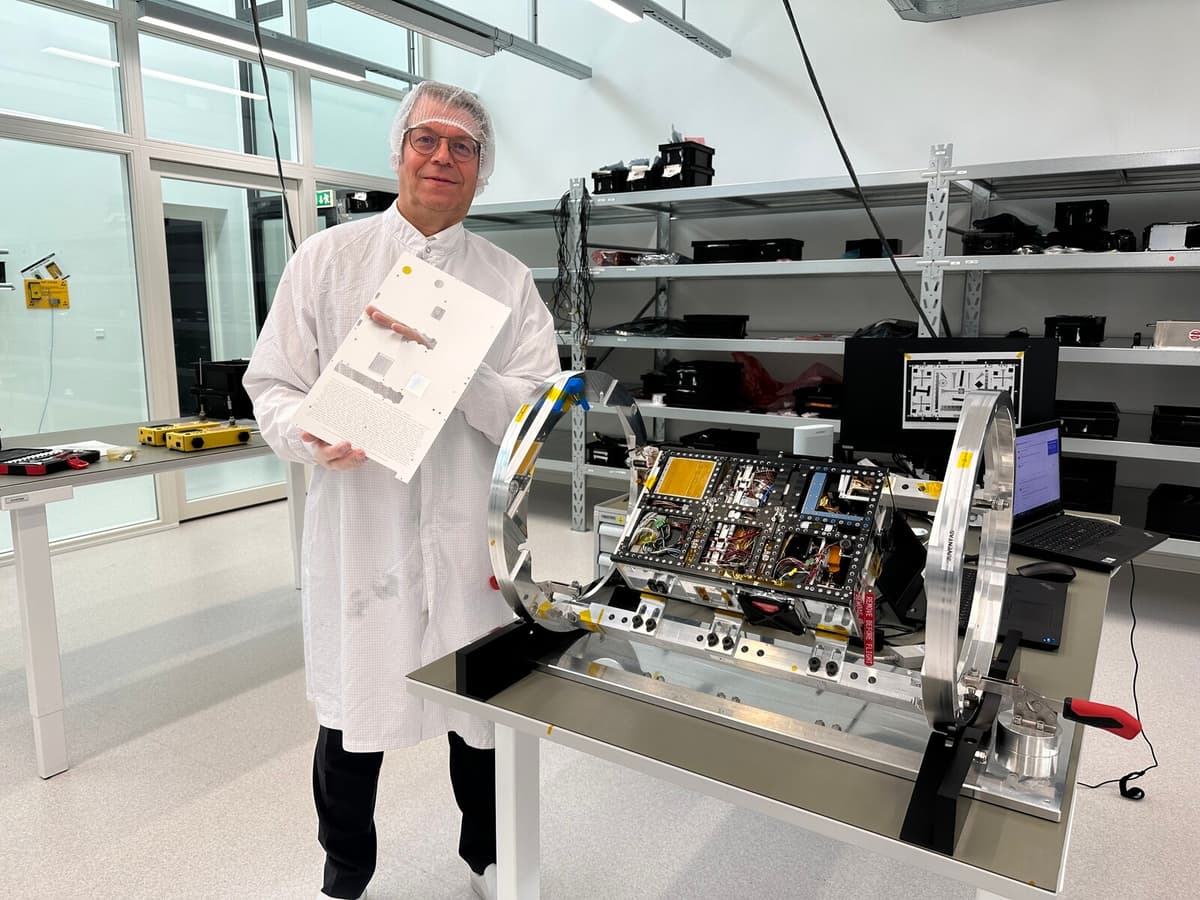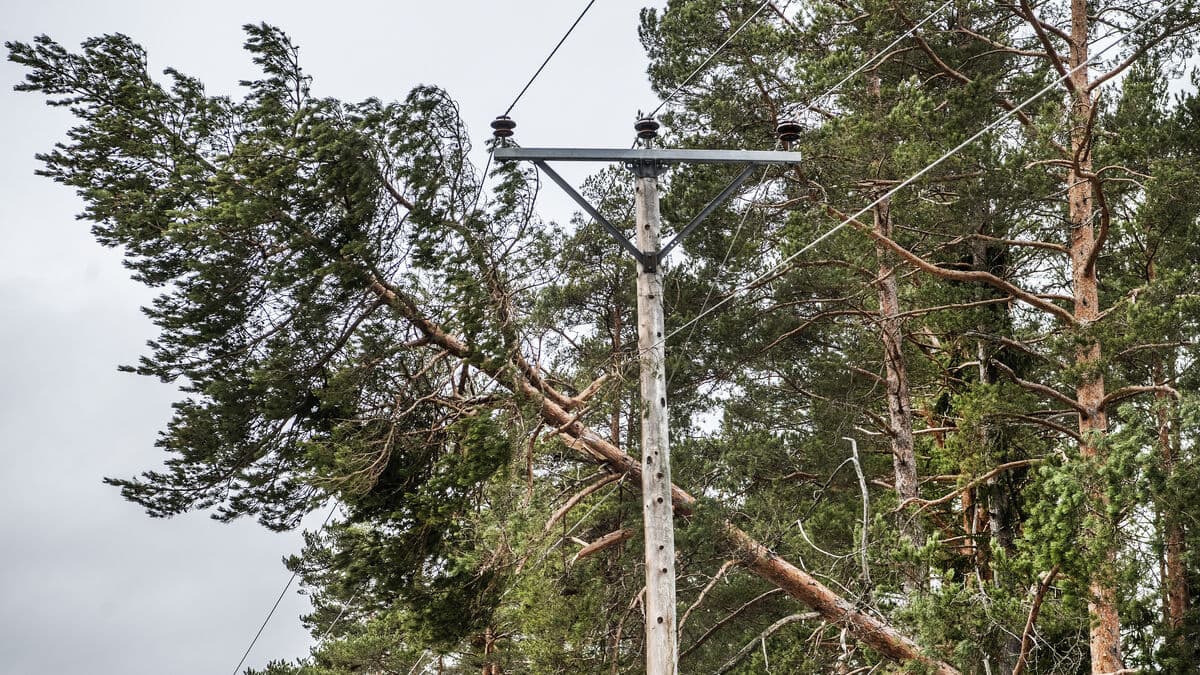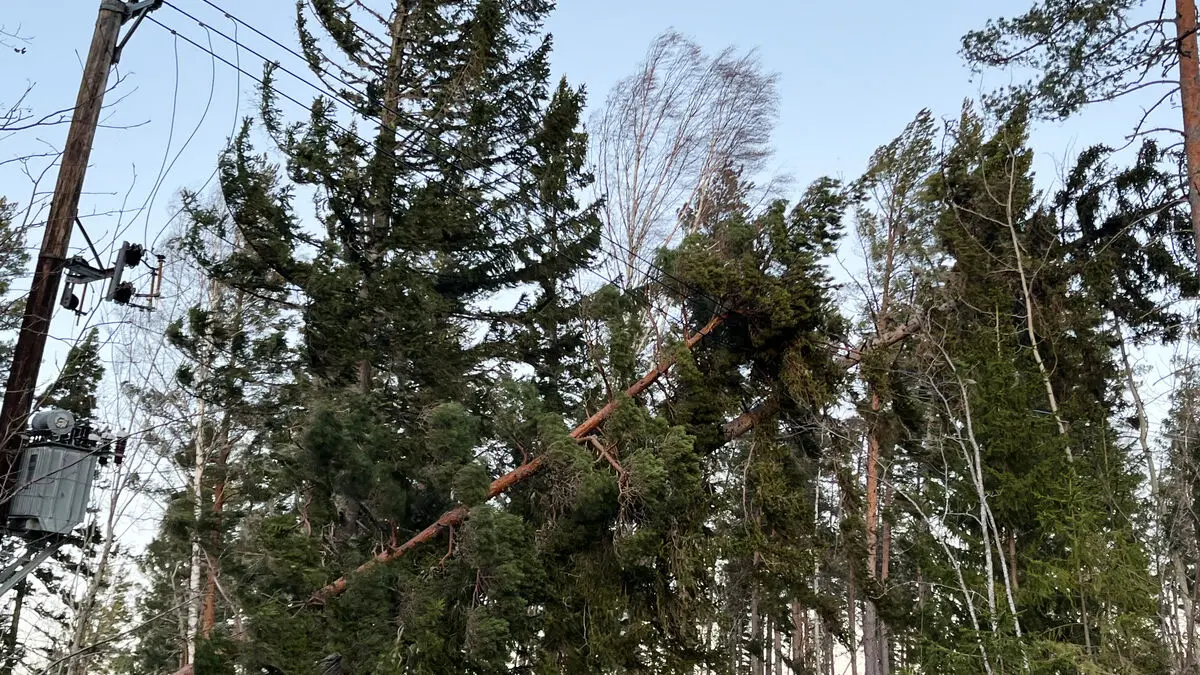He is responsible for Juventas, a so-called cube satellite on board Hera.
The European Space Agency ESA's probe, named after a goddess in Greek mythology, was launched in October. The ultimate goal is the asteroid Didymos, or more specifically the moon orbiting it, Dimorphos.
These rocks far out in space pose no threat to Earth, but were chosen by the US space agency NASA for a dramatic test in 2022. In a rehearsal attack later described as successful, the spacecraft Dart (Double Asteroid Redirection Test) hit the asteroid to change its orbit.
Jan Persson explains that Dimorphos is "about the same size as the pyramids in Egypt".
So it's a big rock, simply. And with Dart, this small spacecraft that's quite light but comes with a tremendous speed, you could actually affect its orbit.
Investigating the crime scene
The effects of the "bombing" have so far only been studied from a distance. But Hera will change that when it catches up with Didymos-Dimorphos next year.
He compares Hera and its two small satellites Juventas and Milani to forensic experts investigating a crime scene. The crater after Dart will be studied to learn more about such space rocks.
You know what minerals it consists of. But not the density, and whether it consists of a mass of loose stones gathered by gravity, or if it's a compact lump.
This will be measured and evaluated from orbit by Hera, which is comparable in size to a car. But what's really exciting for Persson and the Danish company Gomspace is when their cube satellite Juventas sets out on its own.
Daring a bit more
It's no bigger than a briefcase, but can venture into "a bit more daring missions", as Persson puts it. The explanation is that cube satellites, which have a standard format of one cubic decimeter, can be assembled to gain more functions. In Juventas' case, six decimeter-sized cubes have been assembled, two of which contain a cold gas system with tiny rocket engines.
You disconnect it and then you can maneuver it to fly closer.
And since such probes are anyway discarded after completing their mission, they're taking a big chance – to land on Dimorphos. It's not what cube satellites are built for, they don't even have legs to land with.
It's like a briefcase that very slowly lays itself down in the gravel on this moon, says Persson.
There, Juventas will remain, and chance will decide if it can maintain contact with Earth for a while.
How the solar panels lay down and how the radio antennas lay down, it's a bit of a lottery. If you're lucky, the solar cells will lay down with the "yellow side up".
Needs speed
But this dramatic final phase won't happen until winter 2026-2027. To get there, to even be able to chase down Didymos far out in space, Hera needs more speed. And it will get it in a few months, by "playing slingshot" around Mars, as Persson calls it.
Anja Cetti Andersen, professor of astrophysics in Copenhagen, has described it as throwing the probe towards Mars, but then swerving at the last moment.
You hold your breath. Hope you've really calculated right, she said to the news agency Ritzau last autumn.
"It was them who did it"
But Jan Persson points out that such maneuvers have been done with other probes many times before, since nearly 50 years ago.
I've never heard of anyone failing. It was what made it possible for (the US 70s probes) Voyager to pass by Jupiter, Saturn, Uranus, and Neptune.
He's saving his nerves for 2026-27.
When we'll disconnect from Hera and fly freely, so to speak, after two years.
The nervousness is almost personal – Persson and his colleagues have engraved their names on the inside of a panel on Juventas.
So if someone finds them in a hundred thousand years, they'll see that it was these people who did it.
The premise for the space project Dart has been compared to disaster movies like "Armageddon" and "Deep Impact", where the scenario is that space rocks threaten to collide with Earth.
To be more prepared if this threat becomes a reality in the future, the space agencies wanted to test whether it's possible to bomb an asteroid out of orbit.
The test attack carried out against the harmless space rock Dimorphos in 2022 was followed from a distance and was seen as successful. But for more in-depth conclusions, it's now being followed up with Hera, a European probe that left Earth in October 2023 and will reach Didymos-Dimorphos in winter 2026-2027.
Like the planets, Didymos-Dimorphos orbits the sun, with an orbital period of just over two Earth years.





